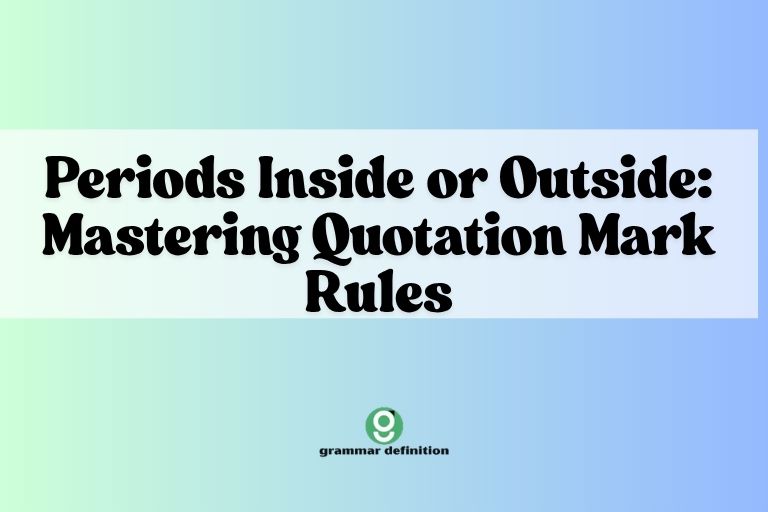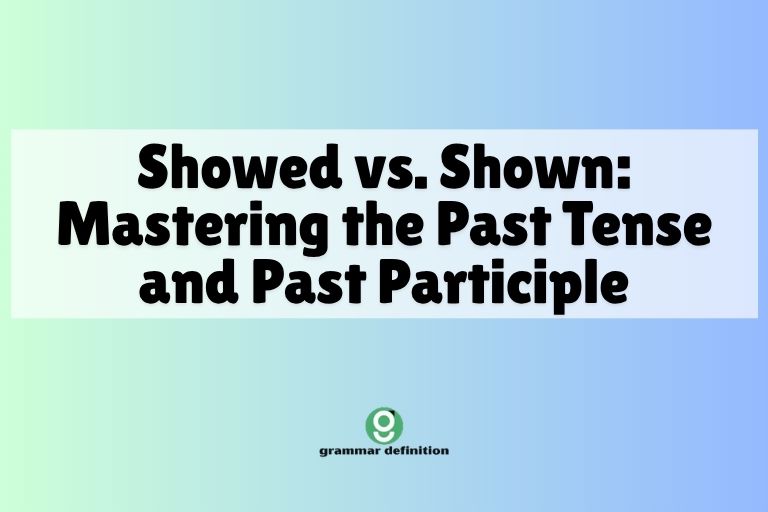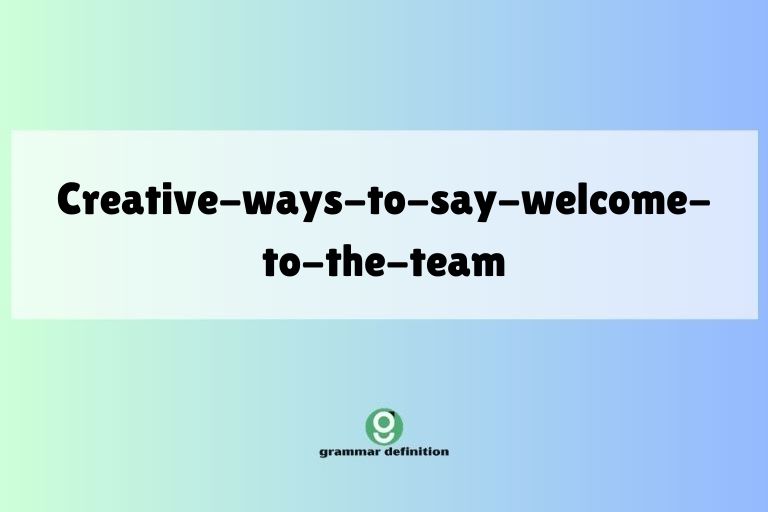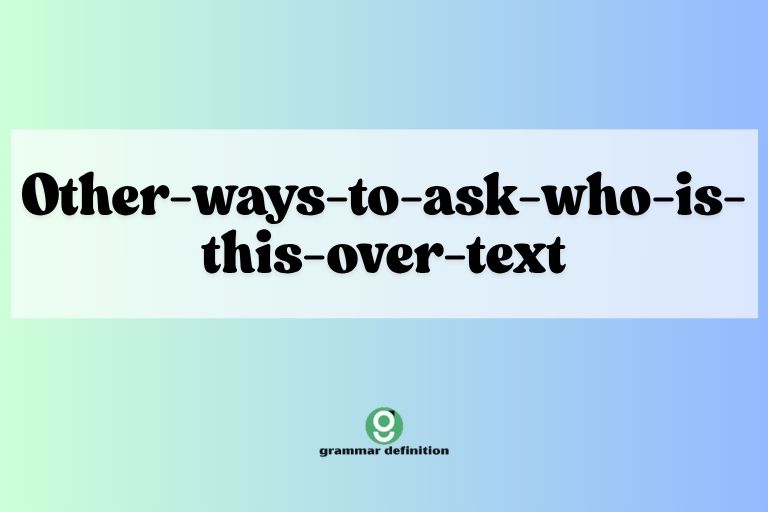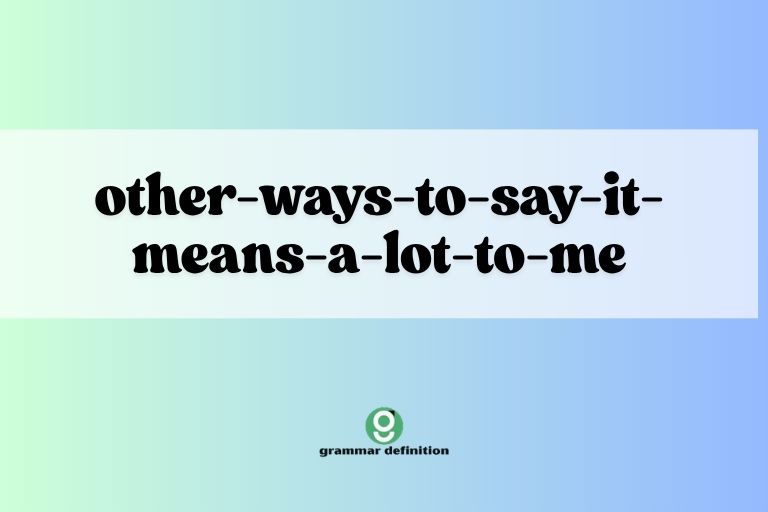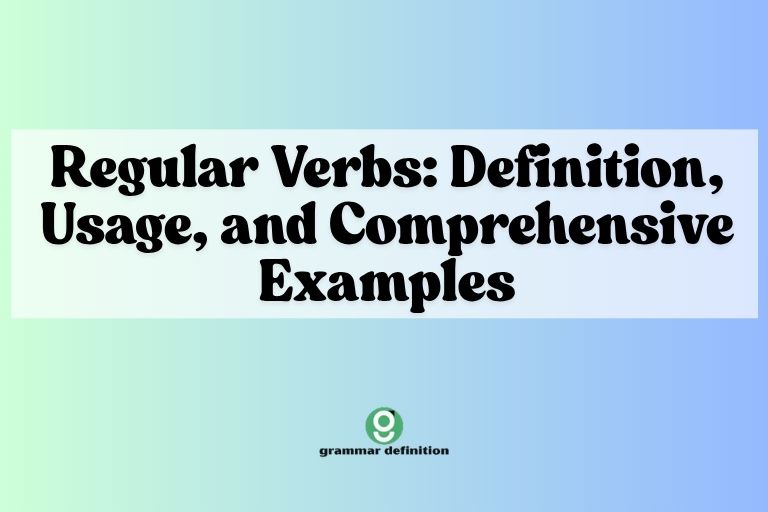Common Nouns vs. Proper Nouns: Mastering the Basics
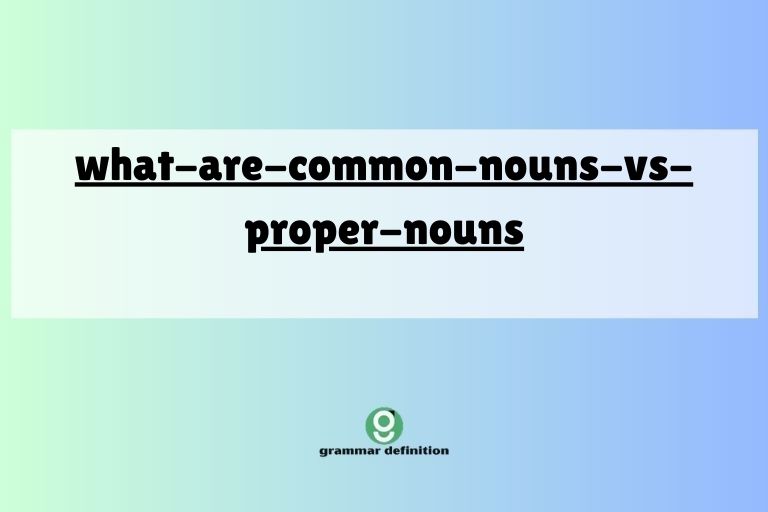
Understanding the difference between common and proper nouns is a fundamental aspect of English grammar. This distinction affects capitalization, sentence structure, and overall clarity in writing.
Mastering this concept is crucial for anyone looking to improve their English language skills, whether they are students, professionals, or simply language enthusiasts. This article provides a comprehensive guide to common and proper nouns, covering their definitions, usage, examples, and common mistakes, ensuring a solid understanding for learners of all levels.
Table of Contents
- Introduction
- Definition of Common and Proper Nouns
- Structural Breakdown
- Types and Categories
- Examples of Common and Proper Nouns
- Usage Rules
- Common Mistakes
- Practice Exercises
- Advanced Topics
- FAQ
- Conclusion
Definition of Common and Proper Nouns
Nouns are words that represent people, places, things, or ideas. They are a fundamental part of speech in the English language.
Nouns can be broadly classified into two main categories: common nouns and proper nouns. Understanding the distinction between these two types is crucial for correct grammar and effective communication.
Let’s explore each category in detail.
Common Nouns
A common noun refers to a general person, place, thing, or idea. It does not refer to a specific entity and is not capitalized unless it begins a sentence or is part of a title. Common nouns provide general names for items within a category. These nouns help us describe the world around us without specifying particular instances. They form the basis of our everyday language and are essential for constructing meaningful sentences.
For example, words like city, book, teacher, and country are all common nouns. They represent general categories and do not refer to any specific city, book, teacher, or country. This generality is what distinguishes them from proper nouns.
Proper Nouns
A proper noun, on the other hand, refers to a specific person, place, thing, or idea. It is always capitalized, regardless of its position in a sentence. Proper nouns give unique names to particular entities, setting them apart from others in their category. They provide specificity and clarity in communication.
Examples of proper nouns include New York City, “The Adventures of Tom Sawyer”, Mr. Smith, and Canada. These nouns refer to specific entities and are therefore capitalized. Recognizing and using proper nouns correctly is essential for maintaining grammatical accuracy and clarity in writing.
Structural Breakdown
The structure of nouns, whether common or proper, is relatively straightforward. Nouns typically function as subjects, objects, or complements within a sentence.
They can be modified by adjectives and can take plural forms. The key structural difference lies in capitalization: proper nouns are always capitalized, while common nouns are not, unless they begin a sentence.
Consider the following examples to illustrate the structural roles of nouns:
- Subject: The dog barked loudly. (dog is a common noun)
- Object: I read a book yesterday. (book is a common noun)
- Complement: He is a doctor. (doctor is a common noun)
- Subject: John went to the store. (John is a proper noun)
- Object: I visited Paris last summer. (Paris is a proper noun)
Understanding these structural roles helps in constructing grammatically correct and meaningful sentences. The proper use of nouns is vital for clear and effective communication.
Types and Categories
While the primary distinction is between common and proper nouns, common nouns can be further categorized based on their meaning and function. These categories include concrete nouns, abstract nouns, collective nouns, and compound nouns.
Each category has its own characteristics and usage rules.
Concrete Nouns
Concrete nouns refer to tangible things that can be perceived through the five senses: sight, sound, touch, taste, and smell. These nouns represent physical objects or entities that exist in the real world. They are easily identifiable and relatable because they can be directly experienced.
Examples of concrete nouns include table, flower, music, pizza, and perfume. Each of these nouns represents something that can be directly perceived through the senses.
Abstract Nouns
Abstract nouns, on the other hand, refer to intangible things such as ideas, concepts, emotions, and qualities. These nouns cannot be perceived through the five senses and represent things that exist in the realm of thought and feeling. They are often more difficult to define and understand than concrete nouns.
Examples of abstract nouns include love, freedom, justice, happiness, and courage. These nouns represent concepts and emotions that cannot be physically touched or seen.
Collective Nouns
Collective nouns refer to a group of people, animals, or things considered as a single unit. These nouns represent collections and can be treated as singular or plural depending on the context. They are useful for describing groups without listing individual members.
Examples of collective nouns include team, family, committee, crowd, and flock. For instance, “The team is playing well” (singular) or “The team are arguing among themselves” (plural).
Compound Nouns
Compound nouns are formed by combining two or more words to create a single noun. These nouns can be written as one word, separate words, or hyphenated words. They often have a meaning that is different from the individual words that make them up.
Examples of compound nouns include sunflower (one word), swimming pool (separate words), and mother-in-law (hyphenated). These nouns combine different elements to create a new, distinct meaning.
Examples of Common and Proper Nouns
To further illustrate the difference between common and proper nouns, let’s look at several examples organized by category. These examples will help solidify your understanding and improve your ability to identify and use nouns correctly.
Examples of Places
The following table provides examples of common and proper nouns related to places. Understanding this distinction is crucial for describing locations accurately.
| Common Noun | Proper Noun |
|---|---|
| city | New York City |
| country | Canada |
| river | Amazon River |
| mountain | Mount Everest |
| lake | Lake Superior |
| street | Main Street |
| park | Central Park |
| building | Empire State Building |
| school | Harvard University |
| restaurant | The French Laundry |
| museum | Louvre Museum |
| theater | Apollo Theater |
| bridge | Golden Gate Bridge |
| airport | John F. Kennedy Airport |
| stadium | Yankee Stadium |
| hotel | The Ritz-Carlton |
| library | New York Public Library |
| church | St. Patrick’s Cathedral |
| store | Walmart |
| beach | Waikiki Beach |
| island | Hawaii |
| continent | Africa |
| desert | Sahara Desert |
| forest | Amazon Rainforest |
| valley | Silicon Valley |
The table above illustrates how common nouns provide general categories while proper nouns give specific names to particular places. This distinction is fundamental to clear and precise communication.
Examples of People
This table provides examples of common and proper nouns related to people. Understanding the difference helps in referring to individuals accurately.
| Common Noun | Proper Noun |
|---|---|
| teacher | Ms. Johnson |
| doctor | Dr. Smith |
| president | Joe Biden |
| author | J.K. Rowling |
| scientist | Albert Einstein |
| artist | Leonardo da Vinci |
| musician | Beyoncé |
| actor | Brad Pitt |
| athlete | Michael Jordan |
| chef | Gordon Ramsay |
| engineer | Ada Lovelace |
| politician | Angela Merkel |
| inventor | Thomas Edison |
| philosopher | Socrates |
| writer | Jane Austen |
| composer | Ludwig van Beethoven |
| director | Steven Spielberg |
| singer | Taylor Swift |
| dancer | Misty Copeland |
| journalist | Christiane Amanpour |
| lawyer | Amal Clooney |
| accountant | Warren Buffet |
| architect | Frank Lloyd Wright |
| astronaut | Neil Armstrong |
| biologist | Charles Darwin |
This table clearly distinguishes between general categories of people (common nouns) and specific individuals (proper nouns). Proper capitalization is essential when using proper nouns.
Examples of Things
The following table provides examples of common and proper nouns related to things. This distinction is important for identifying and naming objects correctly.
| Common Noun | Proper Noun |
|---|---|
| book | “To Kill a Mockingbird” |
| movie | “The Shawshank Redemption” |
| song | “Bohemian Rhapsody” |
| car | Toyota Camry |
| phone | iPhone 13 |
| computer | MacBook Pro |
| television | Samsung QLED TV |
| game | Minecraft |
| magazine | National Geographic |
| newspaper | The New York Times |
| painting | “Mona Lisa” |
| sculpture | “David” |
| brand | Nike |
| drink | Coca-Cola |
| snack | Lay’s Potato Chips |
| restaurant chain | McDonald’s |
| clothing store | Zara |
| airline | Delta Airlines |
| hotel chain | Hilton Hotels |
| coffee shop | Starbucks |
| fast food | Burger King |
| social media | |
| streaming service | Netflix |
| search engine | |
| operating system | Microsoft Windows |
This table showcases the difference between general items (common nouns) and specific products or creations (proper nouns). Remember to capitalize proper nouns for clarity.
Examples of Dates and Times
The following table provides examples of common and proper nouns related to dates and times. This distinction is crucial for specifying particular events and periods.
| Common Noun | Proper Noun |
|---|---|
| day | Monday |
| month | January |
| year | 2023 |
| holiday | Christmas |
| season | Summer |
| era | Victorian Era |
| century | 21st Century |
| decade | 1990s |
| event | World War II |
| festival | Diwali |
| birthday | My birthday |
| anniversary | Wedding Anniversary |
| memorial day | Memorial Day |
| new year | New Year’s Eve |
| halloween | Halloween |
This table illustrates how specific days, months, and holidays are proper nouns and require capitalization, while general terms like “day” and “month” are common nouns.
Examples of Organizations
The following table provides examples of common and proper nouns related to organizations. This distinction is important for identifying and naming entities correctly.
| Common Noun | Proper Noun |
|---|---|
| company | |
| university | Harvard University |
| government agency | Federal Bureau of Investigation (FBI) |
| nonprofit organization | American Red Cross |
| sports team | Los Angeles Lakers |
| political party | Democratic Party |
| international organization | United Nations |
| religious organization | Catholic Church |
| hospital | Massachusetts General Hospital |
| school district | New York City Department of Education |
| police department | New York Police Department |
| fire department | Los Angeles Fire Department |
| military branch | United States Army |
| news organization | CNN |
| research institute | Massachusetts Institute of Technology (MIT) |
This table highlights the difference between general types of organizations (common nouns) and specific named organizations (proper nouns). Always capitalize the names of specific organizations.
Usage Rules
Using common and proper nouns correctly involves following specific rules related to capitalization, articles, and plural forms. Adhering to these rules ensures grammatical accuracy and clarity in writing.
Capitalization Rules
The most important rule to remember is that proper nouns are always capitalized, regardless of where they appear in a sentence. Common nouns are only capitalized when they begin a sentence or are part of a title.
Examples:
- Correct: I visited Paris last summer.
- Incorrect: I visited paris last summer.
- Correct: The book is on the table.
- Correct: Book sales have increased this year.
Titles of books, movies, songs, and other works also follow specific capitalization rules, often capitalizing the first letter of each major word (excluding articles, prepositions, and conjunctions).
Use of Articles
The articles a, an, and the are often used with nouns. The choice of article depends on whether the noun is specific or general, and whether it is countable or uncountable.
Common nouns generally use articles, while proper nouns typically do not, unless referring to a specific instance or a descriptive name.
Examples:
- Correct: I read a book. (common noun, general)
- Correct: I read the book you recommended. (common noun, specific)
- Correct: I visited Paris. (proper noun, no article)
- Correct: The Amazon River is very long. (proper noun, descriptive)
Plural Forms
Most common nouns form plurals by adding -s or -es to the singular form. Proper nouns can also have plural forms when referring to multiple instances of the same entity, but this is less common.
Examples:
- Singular: book, Plural: books
- Singular: city, Plural: cities
- Singular: Smith, Plural: Smiths (referring to the Smith family)
Irregular nouns have different plural forms that do not follow the standard rules (e.g., child/children, mouse/mice).
Common Mistakes
Several common mistakes can occur when using common and proper nouns. Being aware of these errors can help you avoid them and improve your writing accuracy.
| Incorrect | Correct | Explanation |
|---|---|---|
| I visited paris last summer. | I visited Paris last summer. | Proper nouns must be capitalized. |
| The book is on a table. | The book is on the table. | Use “the” when referring to a specific table. |
| I saw many citys. | I saw many cities. | Correct plural form of “city” is “cities.” |
| She is a doctor smith. | She is Dr. Smith. | “Dr.” is the correct abbreviation for “Doctor” and proper nouns are capitalized. |
| I love to read books. | I love to read books. | This sentence is correct. |
| The united states is a big country. | The United States is a big country. | “United States” is a proper noun and must be capitalized. |
| I am going to the beach. | I am going to the beach. | This sentence is correct. |
| I am going to florida for vacation. | I am going to Florida for vacation. | “Florida” is a proper noun and must be capitalized. |
| My favorite day of the week is monday. | My favorite day of the week is Monday. | Days of the week are proper nouns and must be capitalized. |
| The month of january is cold. | The month of January is cold. | Months are proper nouns and must be capitalized. |
By paying attention to these common mistakes, you can significantly improve the accuracy and clarity of your writing.
Practice Exercises
To reinforce your understanding of common and proper nouns, complete the following exercises. These exercises will help you identify, differentiate, and use nouns correctly.
Exercise 1: Identifying Common and Proper Nouns
Identify whether the underlined word in each sentence is a common noun or a proper noun.
| Question | Answer |
|---|---|
| 1. I live in the city. | Common Noun |
| 2. She visited London last year. | Proper Noun |
| 3. The book is on the table. | Common Noun |
| 4. He works at Google. | Proper Noun |
| 5. The river is very long. | Common Noun |
| 6. We went to Central Park. | Proper Noun |
| 7. She is a teacher. | Common Noun |
| 8. He is reading “The Great Gatsby”. | Proper Noun |
| 9. The car is red. | Common Noun |
| 10. I have a dog. | Common Noun |
Exercise 2: Correcting Capitalization Errors
Correct the capitalization errors in the following sentences.
| Question | Answer |
|---|---|
| 1. i went to paris for vacation. | I went to Paris for vacation. |
| 2. she is reading a book by jane austen. | She is reading a book by Jane Austen. |
| 3. he works at google. | He works at Google. |
| 4. the amazon river is very long. | The Amazon River is very long. |
| 5. my favorite day is monday. | My favorite day is Monday. |
| 6. i visited the empire state building. | I visited the Empire State Building. |
| 7. the month of january is cold. | The month of January is cold. |
| 8. we went to central park. | We went to Central Park. |
| 9. she is a doctor smith. | She is Dr. Smith. |
| 10. he is reading “the great gatsby”. | He is reading “The Great Gatsby”. |
Exercise 3: Filling in the Blanks
Fill in the blanks with either a common noun or a proper noun that makes sense in the context.
| Question | Answer |
|---|---|
| 1. I live in the ______. | city (Common Noun) or New York (Proper Noun) |
| 2. She works as a ______ at the hospital. | doctor (Common Noun) or Dr. Jones (Proper Noun) |
| 3. I am reading a ______ by ______ . | book (Common Noun) or “Pride and Prejudice” by Jane Austen (Proper Noun) |
| 4. The ______ is very beautiful. | park (Common Noun) or Central Park (Proper Noun) |
| 5. He drives a ______ . | car (Common Noun) or Toyota (Proper Noun) |
| 6. My favorite ______ is ______. | holiday (Common Noun) or Christmas (Proper Noun) |
| 7. The name of my ______ is ______. | school (Common Noun) or Harvard University (Proper Noun) |
| 8. I went to the ______ to see a movie. | theater (Common Noun) or Apollo Theater (Proper Noun) |
| 9. He is the ______ of the United States. | president (Common Noun) or Joe Biden (Proper Noun) |
| 10. She is a famous ______ . | singer (Common Noun) or Taylor Swift (Proper Noun) |
Advanced Topics
For advanced learners, it’s important to understand more complex aspects of noun usage, such as nouns used as adjectives and proper nouns in common usage.
Nouns Used as Adjectives
Nouns can sometimes function as adjectives, modifying other nouns. When a noun is used as an adjective, it typically describes a characteristic or quality of the noun it modifies.
Examples:
- School bus (school is a noun modifying the noun bus)
- Coffee cup (coffee is a noun modifying the noun cup)
- History lesson (history is a noun modifying the noun lesson)
In these examples, the nouns school, coffee, and history are used to describe the type of bus, cup, and lesson, respectively.
Proper Nouns in Common Usage
Sometimes, proper nouns can enter common usage, losing their capitalization and becoming common nouns. This usually happens when a proper noun becomes synonymous with a general type of object or action.
Examples:
- Band-Aid (originally a brand name, now used generically for adhesive bandages)
- Kleenex (originally a brand name, now used generically for facial tissues)
- Hoover (originally a brand name, now used generically for vacuum cleaners in some regions)
In these cases, the proper nouns have become so widely used that they are now considered common nouns in certain contexts. However, it’s generally best to use the generic term to avoid brand name infringement or confusion.
FAQ
Here are some frequently asked questions about common and proper nouns.
- What is the main difference between common and proper nouns?
The main difference is that common nouns refer to general categories of people, places, things, or ideas, while proper nouns refer to specific instances and are always capitalized.
- Do proper nouns always need to be capitalized?
Yes, proper nouns should always be capitalized, regardless of their position in a sentence. This is a key rule for distinguishing them from common nouns.
- Can a proper noun become a common noun?
Yes, in some cases, a proper noun can become a common noun through widespread usage. This typically happens when a brand name becomes synonymous with a general type of object.
- What are some examples of collective nouns?
Examples of collective nouns include team, family, committee, crowd, and flock. These nouns refer to groups of people, animals, or things considered as a single unit.
- How do I know when to use an article (a, an, the) with a noun?
Use articles with common nouns to indicate whether you are referring to a specific or general instance. Proper nouns usually do not require articles, unless they are descriptive names (e.g., The Amazon River).
- Are there any exceptions to the capitalization rules for proper nouns?
While rare, some companies or brands may intentionally use lowercase letters in their names for stylistic reasons. However, in formal writing, proper nouns should generally be capitalized.
- Can a noun function as an adjective?
Yes, nouns can function as adjectives by modifying other nouns. For example, in the phrase “school bus,” the noun “school” is functioning as an adjective to describe the type of bus.
- What are compound nouns and how are they written?
Compound nouns are formed by combining two or more words to create a single noun. They can be written as one word (e.g., sunflower), separate words (e.g., swimming pool), or hyphenated words (e.g., mother-in-law).
Conclusion
Understanding the difference between common and proper nouns is fundamental to mastering English grammar. This article has provided a comprehensive overview of these concepts, including definitions, examples, usage rules, and common mistakes.
By practicing the exercises and reviewing the information provided, you can significantly improve your ability to identify and use nouns correctly in your writing and speaking.
Remember to pay close attention to capitalization rules and the context in which nouns are used. Consistent practice and attention to detail will help you solidify your understanding and avoid common errors.
With a solid grasp of common and proper nouns, you’ll be well-equipped to communicate clearly and effectively in English.

